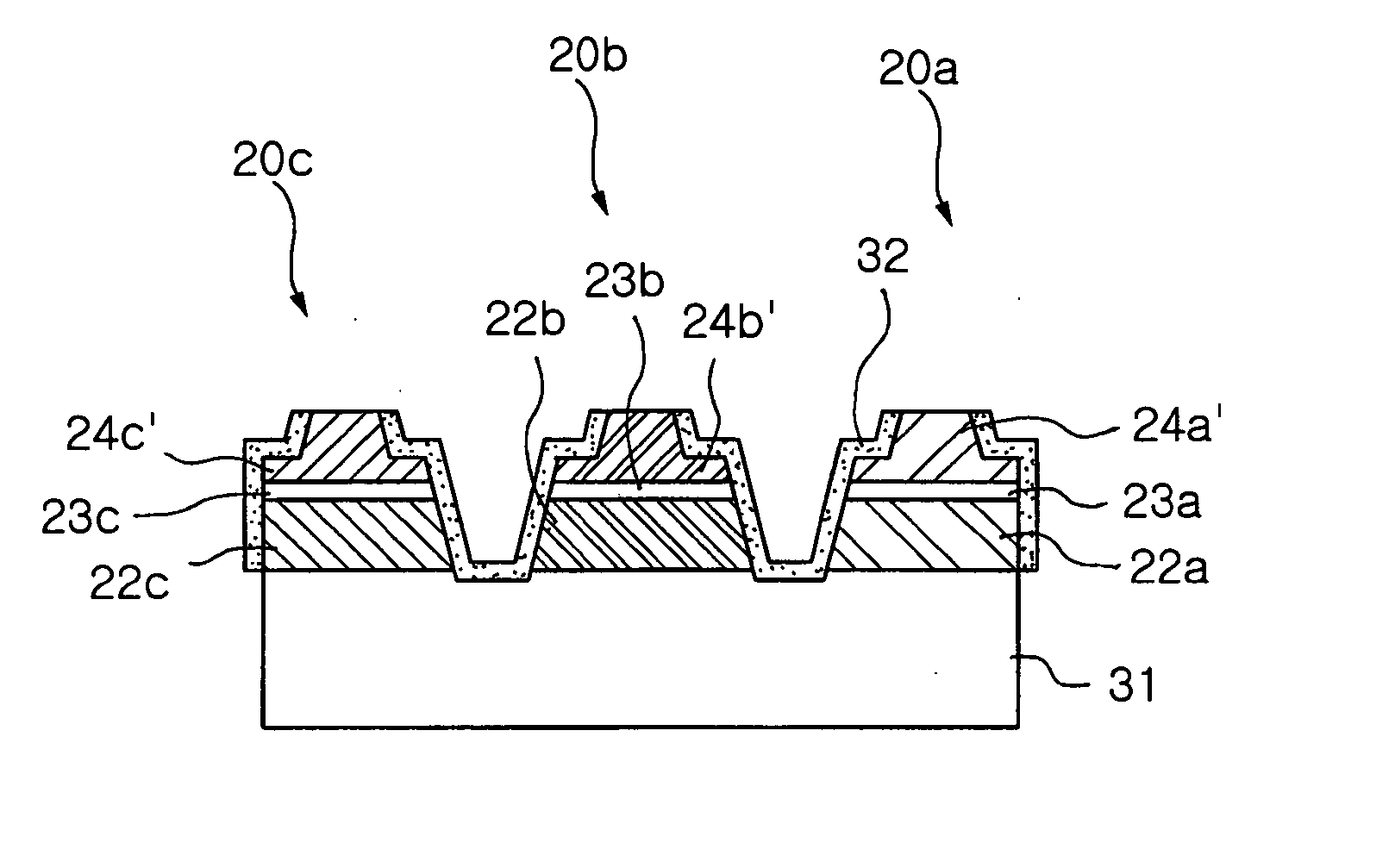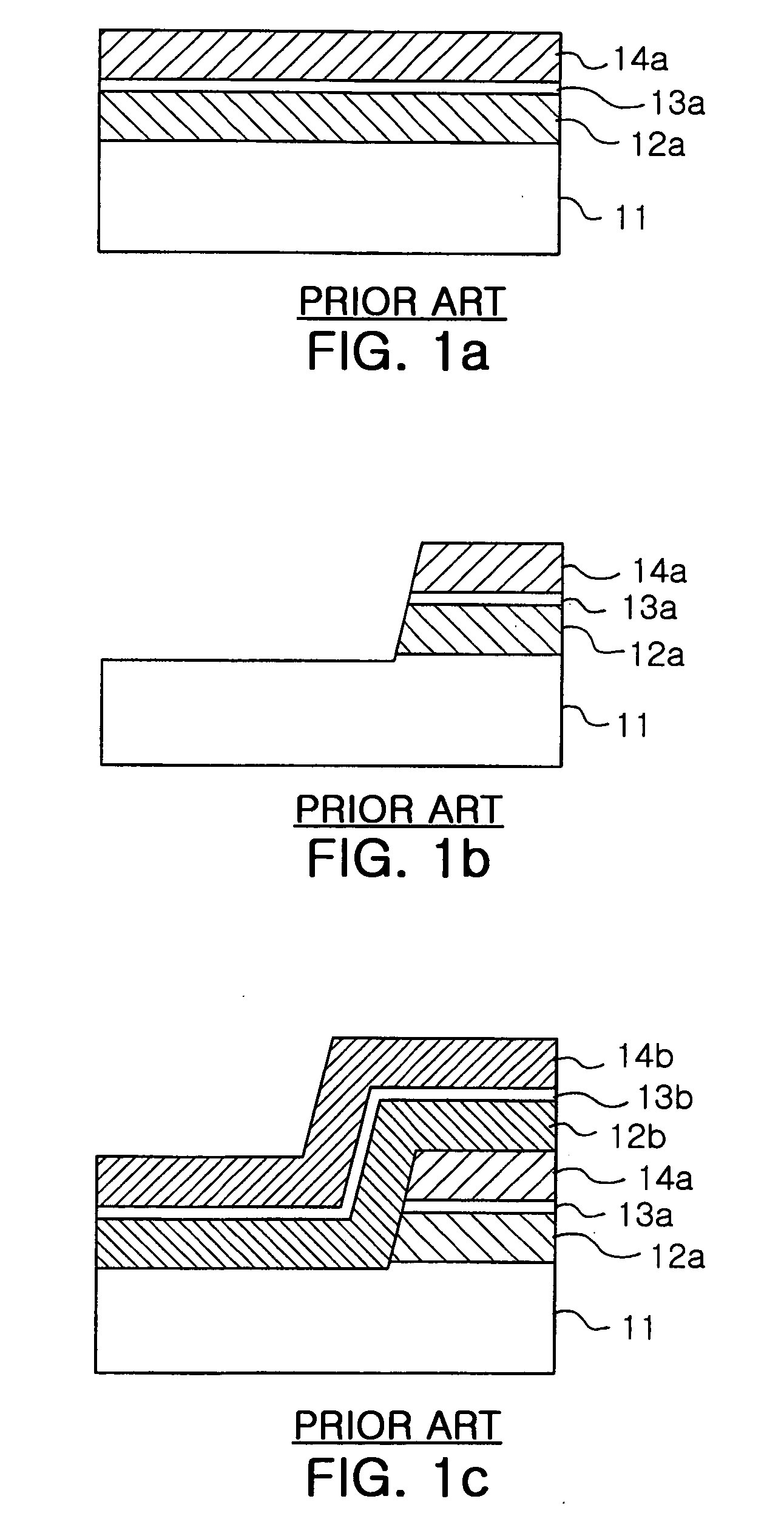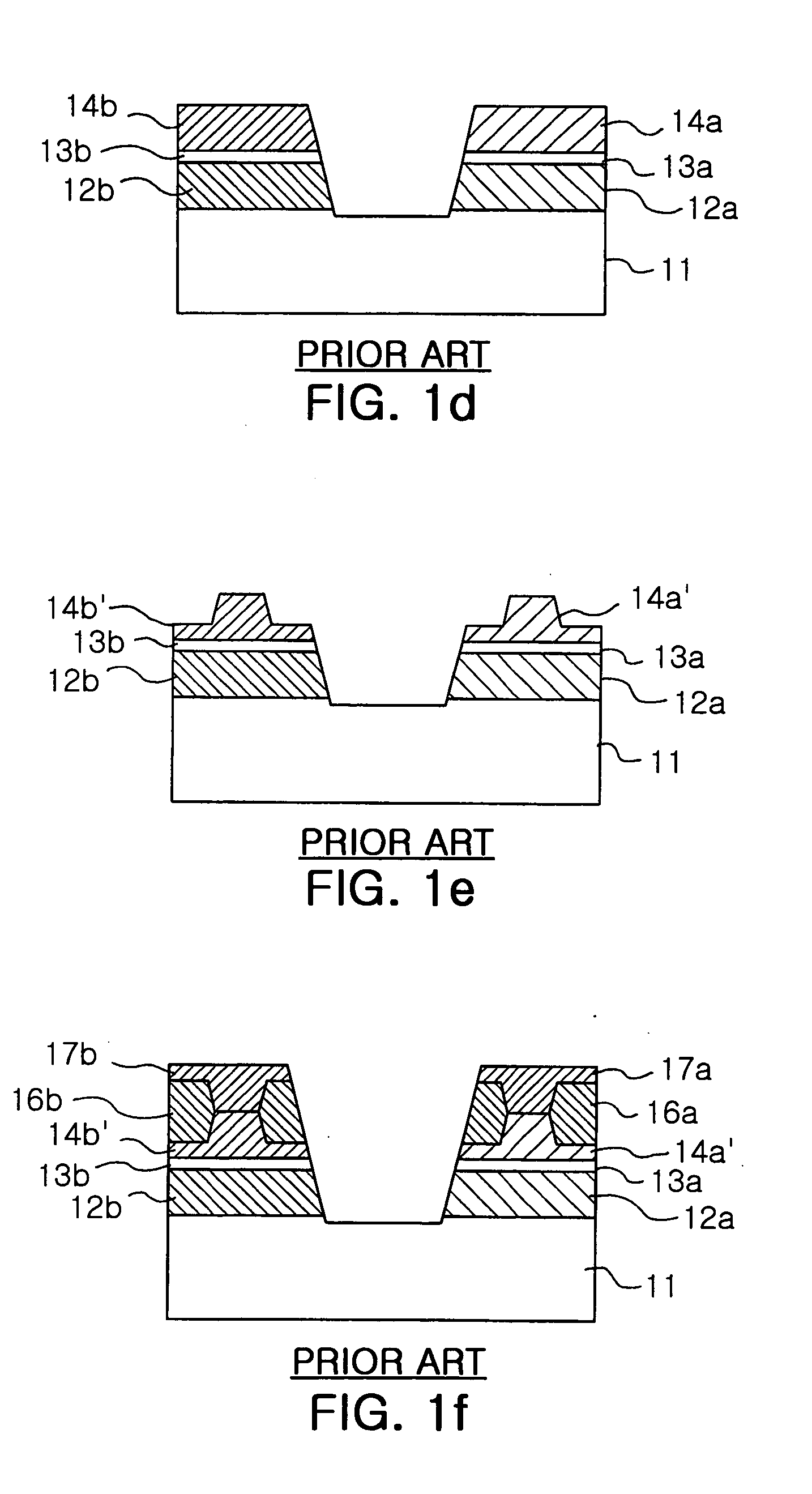Method of producing multi-wavelength semiconductor laser device
a laser device and multi-wavelength technology, applied in the direction of semiconductor laser structure details, semiconductor laser arrangements, semiconductor lasers, etc., can solve the problems of not being able to apply to a three-wavelength (further including light of a short wavelength) semiconductor laser device, unable to form on the same substrate, and difficult to grow algainp and gan epitaxial layers on the same substra
- Summary
- Abstract
- Description
- Claims
- Application Information
AI Technical Summary
Benefits of technology
Problems solved by technology
Method used
Image
Examples
Embodiment Construction
[0032] Detailed description will be made of the preferred embodiment of the present invention with reference to the accompanying drawings.
[0033]FIGS. 2a to 2l are cross-sectional views illustrating the overall procedure of a method for producing a three-wavelength semiconductor laser device according to a preferred embodiment of the present invention.
[0034] As shown in FIG. 2a, a first nitride epitaxial layer 25a for a semiconductor laser structure oscillating light of a short wavelength (e.g., 460 nm) is formed on a sapphire substrate 21. The first nitride epitaxial layer 25a can be formed by sequentially growing a first conductivity-type first clad layer 22a, a first active layer 23a and a second conductivity-type first clad layer 24a. The first conductivity-type first clad layer 22a may be composed of an n-type Al0.2Ga0.8N layer and an n-type GaN layer, and the second conductivity-type first clad layer 24a may be composed of a p-type Al0.2Ga0.8N layer and a p-type GaN layer. Th...
PUM
 Login to View More
Login to View More Abstract
Description
Claims
Application Information
 Login to View More
Login to View More - R&D
- Intellectual Property
- Life Sciences
- Materials
- Tech Scout
- Unparalleled Data Quality
- Higher Quality Content
- 60% Fewer Hallucinations
Browse by: Latest US Patents, China's latest patents, Technical Efficacy Thesaurus, Application Domain, Technology Topic, Popular Technical Reports.
© 2025 PatSnap. All rights reserved.Legal|Privacy policy|Modern Slavery Act Transparency Statement|Sitemap|About US| Contact US: help@patsnap.com



